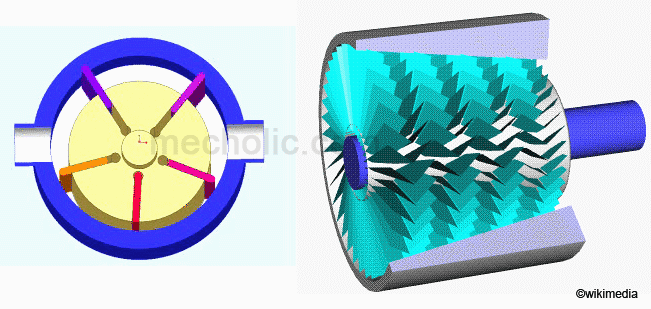Difference between Positive Displacement Compressor and Dynamic Compressor
According to how a compressor is applying pressure to a fluid, the compressor is broadly classified to positive displacement compressor and dynamic compressor.
Positive displacement compressor
In a positive displacement compressor, air drawn into a chamber. The trapped air then compressed physically reducing the volume of the chamber using any mechanism. The most notable example for positive displacement compressors is reciprocating compressor in which air is first drawn into the cylinder. A piston connected to slider crank mechanism presses the trapped gas against a wall (reducing the volume) to increase its pressure. Other examples for positive displacement compressor are rotating screw compressor and rotary vane compressor.Positive displacement compressor give constant flow rate against variable output pressure.
Dynamic compressor
In this type of compressor the gas is first accelerated to high velocity, and then it passed through a diffuser. The kinetic energy of the air is converted to pressure energy at diffuser before it leaves through the outlet. Dynamic compressor further classified intoCentrifugal compressor: The air sucks to the center of the impeller. It is accelerated towards its periphery. They give more compression per stage than axial type.
🔗Centrifugal compressor parts and its function
🔗Single stage and Multi stage compressor - Advantages and Limitation
Axial compressor: It consists of a set of blades. Air is drawn into one end, flow parallel to the axis of rotation, and then discharge at the other end. They result in low compression, but high flow rate. Generally used for ventilation.
Read: How Does A Compressor Differ From The Pump?


